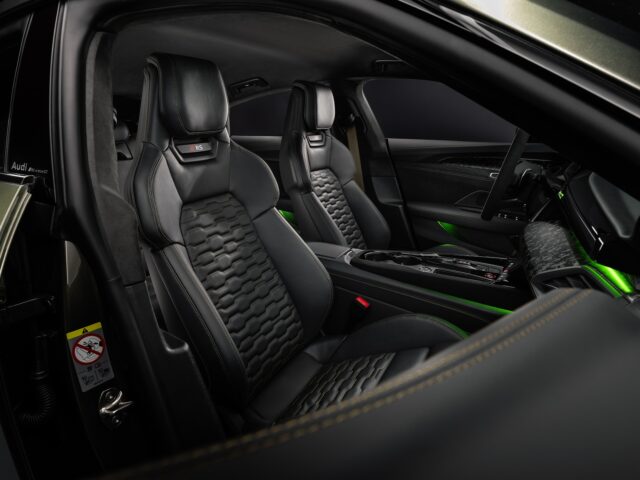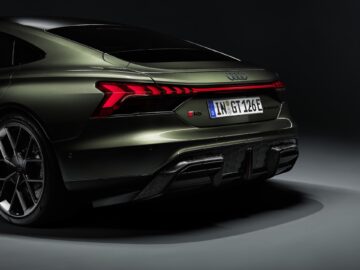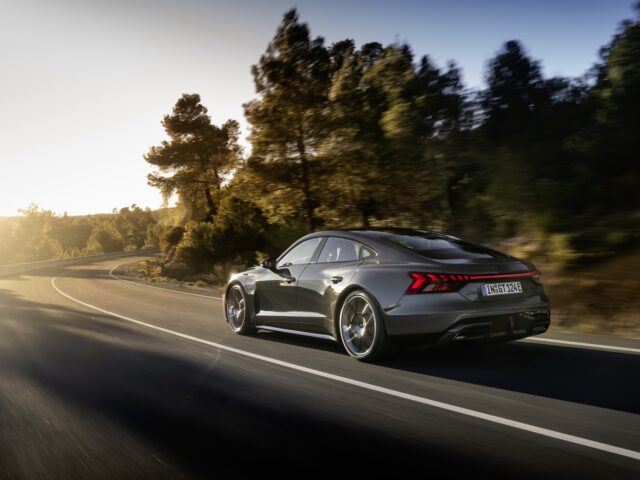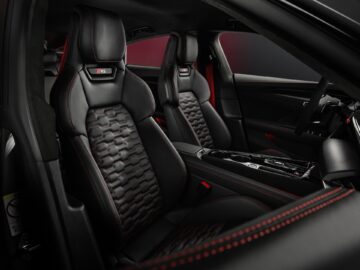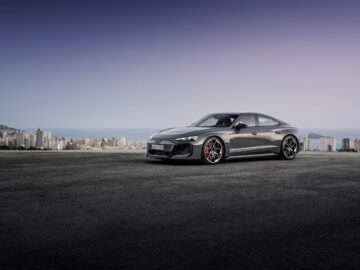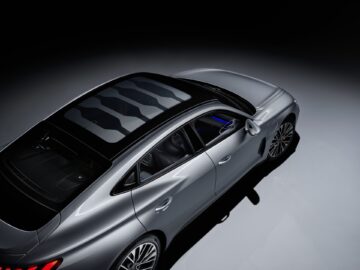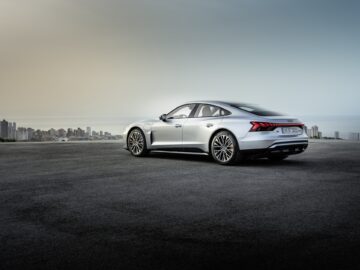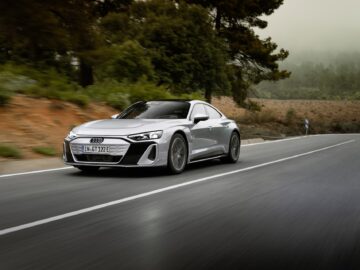Audi RS e-tron GT performance ticks nearly 1,000 hp!
Audi S e-tron GT
The Audi S e-tron GT can be identified by the black cover of the Singleframe grille. The body-colored strip and air-curtains add a sporty touch. At the rear, the diffuser with an insert in body color is the eye-catcher.
Audi RS e-tron GT
The Audi RS e-tron GT models stand out with the 3D honeycomb structure of the singleframe grille and L-shaped blades that make them appear visually lower. At the rear, those L-shaped blades also stand out. The diffuser has a vertical red reflector. Optionally, the RS e-tron GT (performance) is available with a roof finished in matte carbon. New to the rims range are 21-inch ones with a design that references the rims of the 1991 Avus quattro study model.
Interior Audi e-tron GT
All new Audi e-tron GT models feature a steering wheel that is flattened at the top and bottom. In RS versions, the steering wheel has red control satellites. A 12-hour marker is optional. The seats have been further improved.
In the RS e-tron GT performance, a power display and speedometer with a white background are selectable, a reference to the white dials of the 1994 Audi RS 2 Avant. A smart glass panoramic roof is optionally available. This can switch from transparent to four degrees of opaque matte (in a honeycomb pattern) and vice versa at the touch of a button. This roof was already available on the Porsche Taycan.
The Audi S e-tron GT features fourteen-way power Sport seats Plus. The seats in the RS e-tron GT models are available with massage function. Durable materials are used for cladding. For example, Dinamica looks and feels like suede, but it consists of almost 50% recycled polyester. The Cascade upholstery material looks like fabric, but is also composed mostly of recycled polyester.
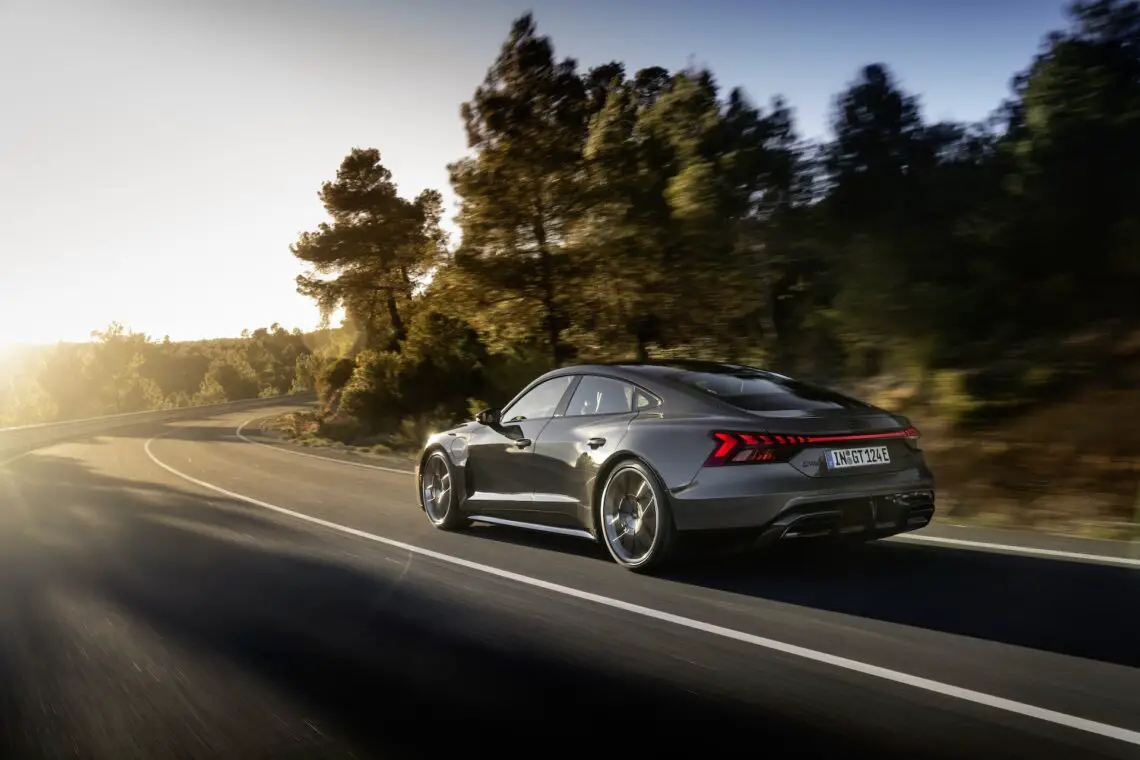
Engine variants Audi e-tron GT
Each Audi e-tron GT has Quattro all-wheel drive thanks to separate electric motors on the front and rear axles. Electric motors are not only more powerful but also lighter. The engine for the rear axle is ten kilograms lighter than before. The new S e-tron GT has a system output of 500 kW (679 hp), good for a 0-100 time of 3.4 seconds and a top speed of 245 km/h.
The RS e-tron GT takes the next step with 630 kW (856 hp). That yields a 0-100 sprint of 2.8 seconds. With 680 kW (925 hp) of system power, the RS e-tron GT performance is the most powerful series production Audi ever. It accelerates from 0-100 km/h in 2.5 seconds. Both RS models have a top speed of 250 km/h. The braking system is now equipped with larger brake discs. RS models have tungsten-coated brake discs. Optional carbon-ceramic brake discs including ten-piston calipers are available.
Improved battery technology
The Audi e-tron GT models feature a battery pack with a net capacity of 97 kWh. The higher energy density is due to optimized cooling and modified cell chemistry. In the process, the battery pack is 9 kg lighter. Recovery power increased from 290 to 400 kW. Thereby, the driver can set the levels of brake energy recovery via paddles on the steering wheel. The new battery is chargeable at 320 kW. Under ideal conditions, charging from 10-80% takes only 18 minutes. Even under cold conditions, it is possible to achieve high payloads. A heat pump that provides energy-efficient operation of the air conditioning/heating system helps optimize range, especially in winter.
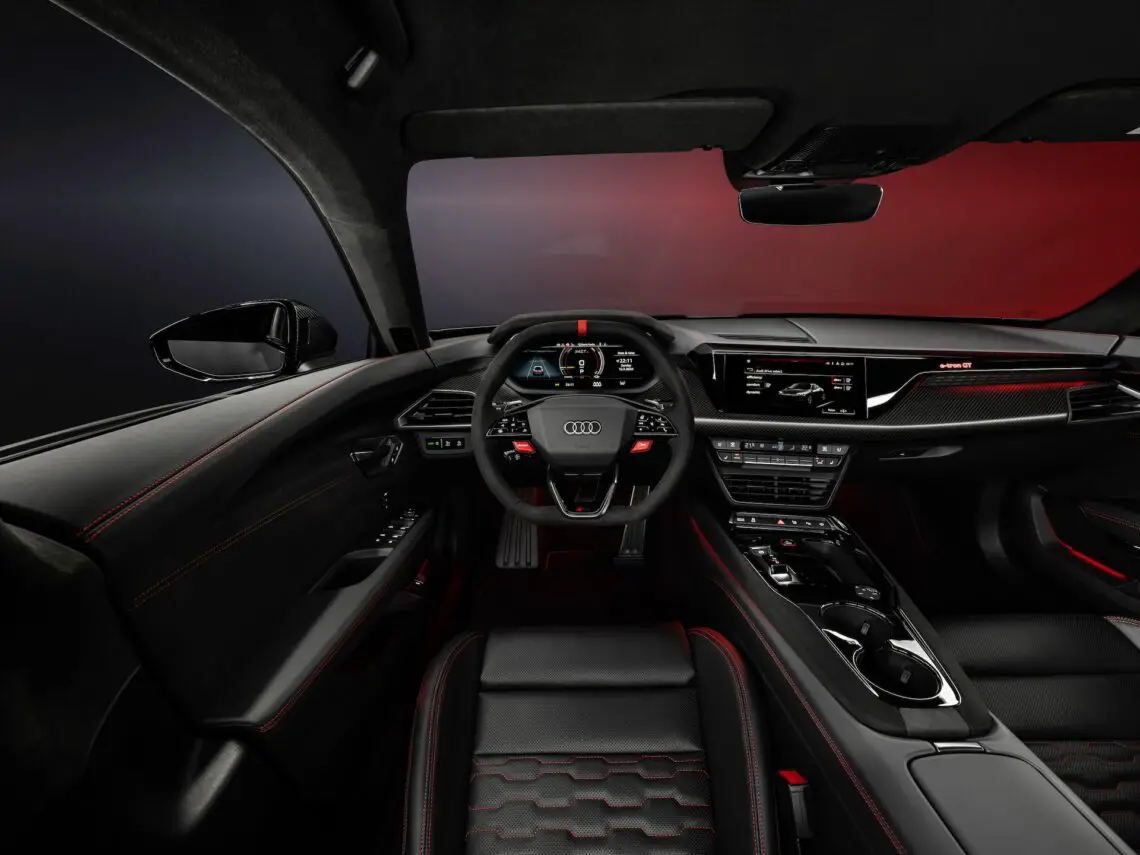
Undercarriage Audi e-tron GT
As standard, the Audi e-tron GT features a new air suspension system with dual-chamber technology. This allows for very dynamic handling without sacrificing comfort. Optionally, the innovative active suspension is available. Thus, the e-tron GT offers an unprecedented wide spread between comfort and driving dynamics. Audi drive select allows the driver to set a driving mode of their choice: Efficiency, Comfort or Dynamic. An individual driving mode is also available in the S e-tron GT, and for the RS models there are two self-configurable RS modes. The RS e-tron GT performance mode is designed for track use.
Four-wheel steering
Audi can deliver the e-tron GT with all-wheel steering. A direct steering transmission from the front wheels is included. As a result, less steering force is required at lower speeds. At speeds up to 50 km/h, the front and rear wheels steer in opposite directions. This makes maneuvering the car easier, not least because it reduces the turning radius by about 0.6 meters. From 80 km/h, the rear wheels steer in the same direction as the front wheels, improving stability. At speeds between 50 and 80 km/h, the advanced system automatically adjusts the steering angle of the rear wheels to the driving conditions.
